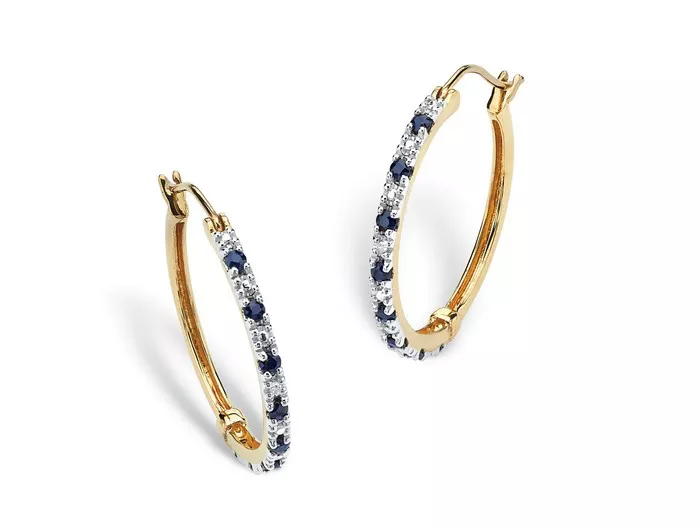Hoop earrings are a timeless accessory, adding flair and elegance to any ensemble. However, the question of whether one can sleep with hoop earrings in is not merely about fashion but also about safety and health. While some may find it convenient to keep their earrings on throughout the night, there are several factors to consider before making this decision. From safety concerns to potential health risks and material considerations, let’s delve into the intricacies of sleeping with hoop earrings.
Safety Concerns
One of the primary concerns associated with sleeping with hoop earrings is the risk of them getting caught on bedding or hair. Hoops, especially larger ones, have a tendency to snag on fabrics, which can lead to discomfort or, worse, torn earlobes. Imagine waking up to find your earring entangled in your hair or, worse, ripped from your earlobe due to a sudden movement during sleep. Such incidents are not only painful but can also result in permanent damage to your earlobes, requiring medical attention to repair.
Moreover, the risk of injury isn’t limited to the ears. Hoop earrings can also pose a choking hazard if they become entangled around the neck during sleep, particularly for those who move around a lot during the night. Therefore, it’s essential to consider these potential dangers before deciding to sleep with hoop earrings.
Health Risks
Aside from the physical safety concerns, there are also health risks associated with sleeping in hoop earrings. One common issue is the potential for headaches caused by the pressure exerted on the head when sleeping, especially for side sleepers. The weight of the earrings pressing against the head can result in discomfort and tension, leading to headaches upon waking.
Furthermore, sleeping with earrings increases the likelihood of bacteria accumulating around the earring post. This is particularly concerning for individuals with sensitive skin or those prone to infections. Bacteria thrive in warm, moist environments, making the area around the earring an ideal breeding ground. As a result, wearing earrings while sleeping can heighten the risk of developing infections, such as earlobe abscesses or cellulitis, which require medical treatment to resolve.
Material Considerations
The material of the earrings also plays a crucial role in determining whether it’s safe to sleep with them. Nickel, a common component in many jewelry pieces, is a frequent allergen and can cause skin irritation or allergic reactions, especially when worn for extended periods. Therefore, individuals with nickel allergies should avoid sleeping with earrings containing this metal to prevent adverse skin reactions.
Instead, opt for hypoallergenic materials such as surgical steel, sterling silver, or 18-karat gold. These materials are less likely to cause allergic reactions and are generally considered safe for prolonged wear. Additionally, ensure that the earrings are free from any coatings or platings that may wear off over time, exposing the skin to potentially harmful substances.
New Piercings vs. Old Piercings
The guidelines for sleeping with earrings vary depending on whether the piercing is new or old. For new piercings, it’s generally recommended to keep the initial studs in place for a specified period to promote proper healing. During this time, removing the earrings, even for short periods, can impede the healing process and increase the risk of infection or complications.
Once the piercing has healed, usually after several weeks or months, individuals may have more flexibility in deciding whether to sleep with earrings. However, it’s essential to listen to your body and monitor for any signs of discomfort or irritation. If sleeping with earrings causes discomfort or affects sleep quality, it’s best to remove them before bedtime.
Size and Style of Earrings
When considering whether to sleep with hoop earrings, it’s crucial to take into account the size and style of the earrings. Smaller hoops typically carry less risk compared to larger ones, as they are less likely to get caught on objects or cause discomfort during sleep. Additionally, earrings with openings, such as dangles or chandelier styles, should be avoided, as they pose a higher risk of entanglement and injury.
Opt for simple, lightweight hoop earrings with secure closures to minimize the risk of accidents during sleep. Additionally, consider removing any jewelry with sharp edges or protrusions that may cause discomfort or injury when pressed against the skin during sleep.
In conclusion, while it may be tempting to sleep with hoop earrings for convenience or style, it’s essential to weigh the potential risks and benefits carefully. Safety should always be the top priority when it comes to wearing jewelry, especially during sleep when accidents are more likely to occur. By considering the safety concerns, health risks, material considerations, and the size and style of earrings, individuals can make informed decisions about whether sleeping with hoop earrings is right for them. When in doubt, err on the side of caution and remove the earrings before bedtime to ensure a restful and safe night’s sleep.

